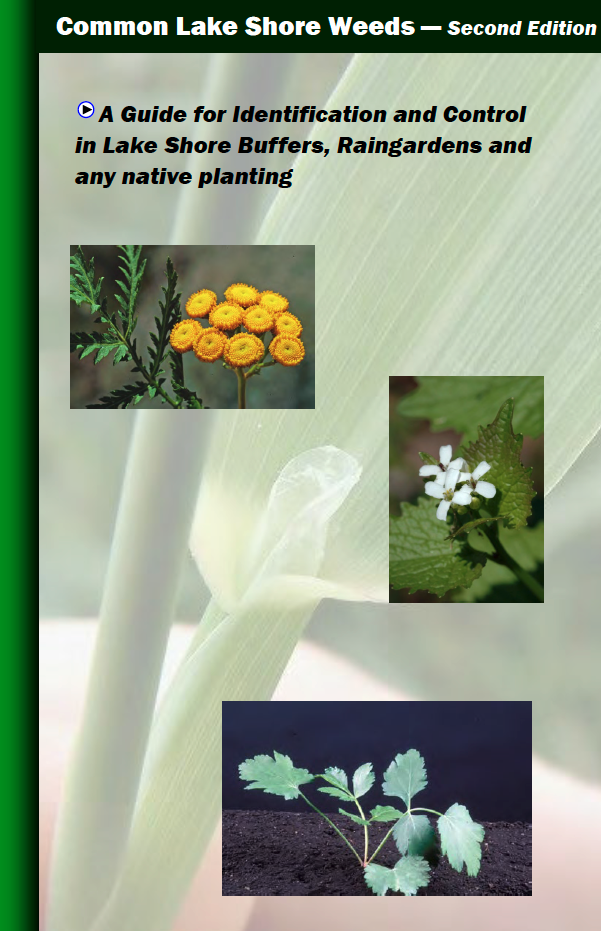Native Plants
Benefits of native plants
Native plants are essential for ecological health and provide a range of ecosystem services for people. Here's just a few ways native plants enhance our lives:
- Protect water quality by increasing stormwater infiltration and reducing soil erosion
- Provide food and shelter for wildlife such as songbirds and butterflies
- Enhance the beauty of natural and developed spaces
- Combat climate change by removing carbon from the atmosphere to store in roots, stems, and leaves
- Support or complement recreational activities such as hiking, birdwatching, and fishing
Native plants come in many shapes, colors, and sizes, and there's a plant to fit just about any place. No matter your aesthetic preference, there's a wildflower, grass, sedge, shrub or tree that would be a perfect fit for your space!
Resources from RPBCWD
Ready to grow wild? Find out why you should choose the straight or wild form of native plants and avoid cultivars or "nativars." If you're ready to pick plants, browse our list of favorite native plants for suburban yards. This list is organized by bloom time so you can maximize beauty and support pollinators. Last, but certainly not least, check out principles you should keep in mind as you take care of your native plants.
Click an image to open the file (pdf).
Resources from others
Native plants and related topics
- Homegrown National Park - Find resources and register your native planting with this grassroots organization.
Native Plant Nurseries
There's a lot of native plant nurseries in and near the Twin Cities. Check out these lists from others:
- List of native plant nurseries and contractors from Wild Ones - Prairie Edge
- List of native plant suppliers, landscapers, and restoration consultants (MnDNR website)
TIP: If you plan to order from a native plant vendor, you may be able to save on shipping fees by picking up your plants at a local native plant market.
Native Plant Sales Events and Markets
Native plant markets are growing in popularity. Search online for information about native plant markets in your area. Here are some native plant markets that happen near the District:
- Wild Ones Prairie Edge Native Plant Sale - Edina (order in advance, pick up in May)
- Wild Ones Twin Cities Native Plant Sale - Richfield (order in advance, pick up in May)
- Burnsville Native Plant Market - Burnsville (May)
Check out this extensive lists of native plant sales events and markets from Blue Thumb: bluethumb.org/spring-2025-native-plant-sales-in-minnesota
Keystone plants are plants that support the most species!
Incorporate at least one keystone plant into your yard in support of ecosystem health. Here are some keystone plants to consider:
- Oaks (Quercus spp.): White Oak, Bur Oak, Red Oak
- Birches (Betula spp.): River Birch
- Willows (Salix spp.): Black Willow
- Prunus shrubs (Prunus spp.): American Plum, Black Chokeberry
- Goldenrods (Solidago spp.): Stiff Goldenrod, Canada Goldenrod
- Asters (Symphyotrichum spp.): Smooth Aster, New England Aster
- Coneflowers (Rudbeckia spp.): Black-eyed Susan, Pale Purple Coneflower
Resources to check out
- Keystone Native Plants - Eastern Temperate Forests - Ecoregion 8 (National Wildlife Federation)
- Keystone Native Plants - Great Plains - Ecoregion 9 (National Wildlife Federation)
- What is a Keystone Species? (Prairie Nursery website)
- Keystone Species: 4 Plants Every Garden Should Have (blog post from Izel Native Plants)
- About Soft Landings (PollinatorsNativePlants.com)

Sherburne Soil and Water Conservation District in partnership with Blue Thumb and the University of Minnesota Extension released the second edition of the booklet, Common Lake Shore Weeds, in 2011. You can download a print-ready version and standard version of the booklet below.
Common Lake Shore Weeds (second edition):
A raingarden is designed to collect stormwater and allow it to soak into the ground. Check out this guide to plant select and placement from RPBCWD:
Rain Garden Plant List from RPBCWD (pdf)Resources to Check Out
- Create Your Own Rain Garden (City of Maplewood)
- Rain Gardens (Bioretention) 101 (Minnesota Stormwater Manual website)
- Rain Garden site from the Wisconsin DNR; includes link to the Rain Garden Manual
- Blue Thumb Raingarden webpage including information about workshops
- Rain Gardens: A Way to Improve Water Quality (University of Massachusetts Amherst)
- Building a Rain Garden (University of Minnesota Extension)
- Rain Garden Maintenance (Capitol Region Watershed District)
Alternative lawns such as bee lawns require less input from you (mowing, fertilizing, watering) and help protect water quality.
Resources to Check Out
- Lawns to Legumes: Your Yard Can BEE the Change from the Minnesota Board of Water & Soil Resources
- Bee lawn information can be found on the University of Minnesota Bee Lab website
- Environmentally friendly lawn care tips from the City of Bloomington
- What is a Bee Lawn? from the Minnesota State Horticultural Society
Watch this video from blue thumb about creating a bee lawn
Insects are the little things that run the world, and we couldn't survive without them. Check out this guide:
Planting for Pollinators Design Guide from BWSR, Xerces Society, and BlueThumb
Here are some other resources to check out:
- Pollinator-Friendly Native Plant Lists from the Xerces Society
- Eight Simple Actions that Individuals Can Take to Save Insects from Global Declines (article from the Proceedings of the National Academy of Sciences - PNAS)
You may not think about soil much, but it's the basis for most growing things. And soil is way more than dirt (and sand, silt, clay)! Healthy soil is a living ecosytem of roots, insects, fungi, and many more organisms. The health of soil plays a huge role in water quality too.
Learn more about soil health:
- Principles of Soil Health (University of Minnesota Office for Soil Health)
- Five Soil Health Principles (Menoken Farm & Burleigh County Conservation District website)
- Soil Health & Arthopods: From Complex System to Worthwhile Investigation (article from the NIH National Library of Medicine)
- Invasive species alert: Jumping Worms information from the UMN Extension
- Soil testing: University of Minnesota Soil Testing Laboratory








